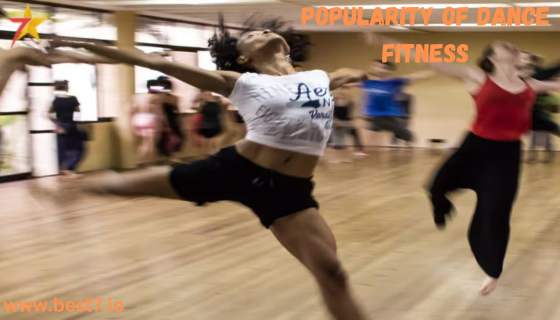
Dance Workouts have become THE HIT of the fitness world, and no wonder because those rhythmic beats combined with different dance moves are beyond mesmerizing. Dance fitness has taken over in gyms and studios, notably with the Zumba craze that attracts a wide-ranging group of individuals. With the proliferation of dance fitness, there is a need to understand why they are gaining popularity and what value a dance-based workout can add.
The Zumba Revolution
Colombian dancer and choreographer Alberto “Beto” Perez created Zumba in the 1990s—a fusion of Latin and international music with dance moves. The ever-popular Zumba led to a global phenomenon with an estimated 15 million Zumba fitness participants in 180 different countries.
In fact, Zumba was the second most effective group fitness program when it came to burning calories, according to research published by the American Council on Exercise, which found you can burn 500 to 1000 depending on what the session entailed.
The positive energy in Zumba classes makes it easier to lose your inhibitions and just have fun while burning a lot of calories. Fast music and short dance routines result in an energetic and fun environment that people can’t resist. For many, Zumba feels like less of a workout and more like a dance party, which can make this type of fitness class appealing to those who seek excitement.
The Draw of Dance Fitness
Accessibility for All
Dance fitness is well-liked because it is inclusive. When combined with the right music, it is perfect regardless of your fitness level so you can rest assured they always feel inclusive. Even if you have never danced a day in your life (like the author), this class will help you with modifications to ensure you can perform according to your ability. According to research published in the International Journal of Behavioral Nutrition and Physical Activity, group dance classes can significantly boost participation among people who might be intimidated by a traditional gym setting.
A Variety of Dance Styles
Dance fitness features several styles, offering broad appeal to anyone in the demographic. In addition to Zumba, other popular dance workouts include Hip Hop Dance Fitness, Ballet Fitness, and Dance Cardio. These styles all bring their unique flavor and various benefits, making it possible for participants to find a class or two that resonates with them. In a poll from Fitness Magazine, 78% of people said they’d much rather dance their way into shape than hit the gym.
Benefits Beyond Physical Health
Dance fitness is not only limited to physical health benefits; it also enhances mental well-being. Not only is it fun to do, but dancing also causes the release of endorphins, which are known as your natural mood elevators. A study in the Journal of Positive Psychology found that regular, weekly dance training lifted mood, lowered anxiety levels, and improved overall subjective well-being. Additionally, the camaraderie that comes with group classes boosts emotional well-being; we all need to feel a sense of belonging!
Good Cardio Workouts
Dance fitness workouts are among the high-energy exercise movements that can uplift the heart rate, making them effective for cardiovascular health. According to a study published in the Journal of Sports Sciences, dance-based workouts can improve heart and lung health, contributing to better endurance—a wonderful supplement to total fitness.
Strength and Flexibility in Dance Workouts
Dance fitness primarily focuses on cardiovascular health but also strengthens muscles and improves flexibility. The dynamic movements help tone muscles all over the body, improving overall strength. A study published in the Journal of Strength and Conditioning Research highlighted improvements in core strength and flexibility among individuals who regularly participated in dance fitness.
Related: Top Trending Dance Workouts
Hip Hop Dance Fitness
Hip Hop Dance Fitness is an oldie but a goodie, pairing fun hip-hop choreography with amazing all-ages aerobic benefits. Expect to burn calories, learn new dance steps, and groove to the latest music. The body-positive nature of these classes has significantly driven participation growth, increasing by 25% over the past five years, according to Dance Magazine.
Ballet Fitness
Ballet Fitness combines the elegance of ballet with exercises from traditional fitness, helping participants achieve strength and flexibility. This low-impact style appeals to those seeking core work and alignment. A study from the Journal of Dance Medicine & Science found that ballet-inspired workouts improve posture, core strength, and overall fitness.
Dance Cardio
This class mixes dance styles with top pop hits to create a fun and diverse workout experience. It is particularly appealing to those who enjoy variety in their workouts. A study published in the Journal of Physical Activity and Health found that participants who took Dance Cardio classes enjoyed their workouts more than those who stuck to a typical gym routine.
Aqua Zumba
Aqua Zumba provides a unique blend of Zumba principles and water resistance, offering a joint-friendly workout. A study published in the International Journal of Aquatic Research and Education found improved cardiovascular fitness and muscular endurance among Aqua Zumba participants.
Dance Fitness as a Community
Support and Motivation
The sense of community in dance fitness group classes fosters a motivating and supportive environment, encouraging participants to push themselves further. A survey by the Fitness Industry Association found that 70% of respondents felt more motivated to exercise in a group setting.
Diversity of Participants
Dance fitness classes often attract individuals from various backgrounds and age groups, creating a shared sense of community. Older adults seeking low-impact, enjoyable workouts are increasingly filling these classes, as reported by the American Council on Exercise.
Building Social Connections
Participants often form friendships through dance fitness classes, creating a supportive network. According to a study published in the Journal of Social Sciences, social interaction within group fitness classes enhances long-term engagement with exercise routines.
How to Get Started with Dance Fitness
Choosing the Right Class
With so many styles available, it’s essential to find one that resonates with your preferences. Trying introductory classes can help you discover the right fit.
Starting Slowly
Ease into dance fitness by starting with lower intensity and gradually increasing your efforts. This approach prevents injuries and ensures long-term success.
Enjoying the Moment
Dance fitness is fun, so take time to enjoy the music and movements. A study in the Journal of Health Psychology emphasizes that exercise enjoyment is key to adherence.
Staying Consistent
Regular participation is vital for achieving fitness goals. A study in the American Journal of Lifestyle Medicine found consistent dance fitness participation improved overall fitness levels.
Tracking Progress
Monitoring your progress with apps or journals can help you stay motivated and visualize your achievements. The Journal of Medical Internet Research highlighted that self-tracking behaviors increase engagement with fitness goals.
The Future of Dance Fitness
The combination of dance and fitness has redefined workouts, blending fun with health benefits. Dance fitness classes bring life to exercise, making it a joyful and sustainable way to stay fit. The future is bright for those embracing dance fitness as a cornerstone of their wellness journey.












